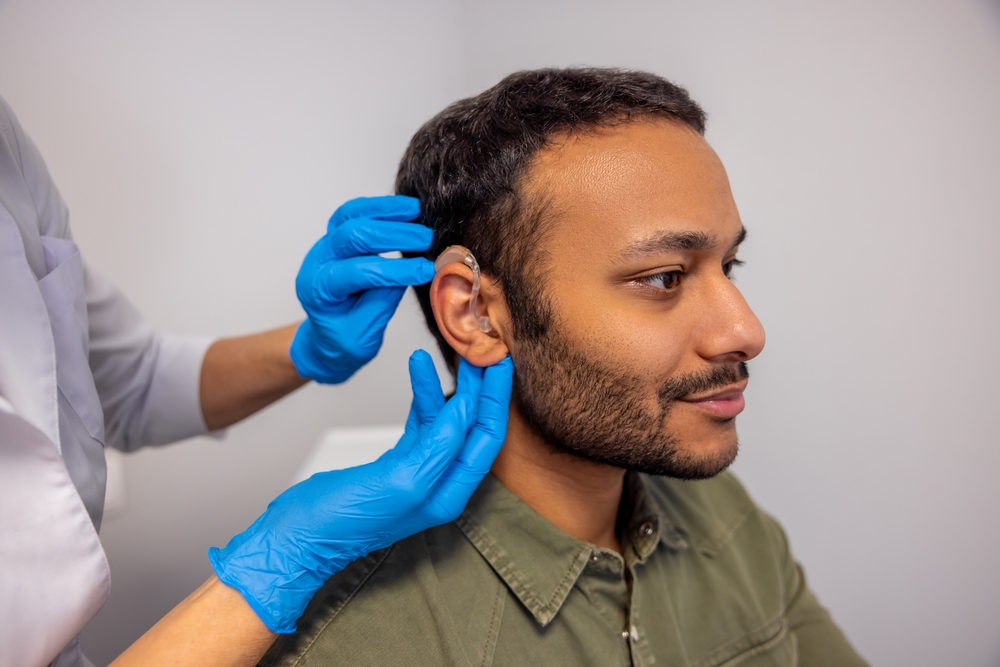It’s one of those bodily substances most of us prefer not to think about. Earwax, that sticky, sometimes smelly stuff you clean out of your ears, seems like nothing more than an annoyance. But before you mindlessly swab it away, take a closer look. The color, consistency, and even smell of your earwax could be broadcasting important information about your health, from infection risks to metabolic issues. This often-ignored bodily substance actually serves as a window into your inner health, revealing subtle clues that even your doctor might not think to ask about.
Why your body makes this sticky substance
Earwax, or cerumen as medical professionals call it, isn’t actually waste. It’s a purposefully produced substance with several important biological functions. Your ear canals contain special glands that secrete this waxy oil specifically to protect one of your most vulnerable sensory organs.
This seemingly gross substance acts as your ears’ personal bodyguard. It traps dust, dirt, and potential pathogens before they can travel deeper into your ear canal. It creates a waterproof barrier that prevents moisture from entering and damaging delicate ear structures. And perhaps most surprisingly, it has antimicrobial properties that actively fight off bacterial and fungal infections.
Earwax also serves as a natural moisturizer for your ear canal, preventing it from becoming dry, itchy, and prone to infection. It even deters insects, creating an uninviting environment for any tiny creatures that might otherwise explore your ear canal.
Your body has designed a clever self-cleaning system where older earwax naturally migrates outward as jaw movements from talking and chewing slowly push it toward the ear opening. This explains why health professionals consistently advise against using cotton swabs, which can actually push wax deeper and interfere with this natural cleaning process.
The genetic earwax divide
Before diving into what earwax reveals about health, it’s fascinating to understand that not everyone’s earwax is created equal. Your earwax type is genetically determined, with two main varieties across human populations.
People of East Asian descent typically have dry, flaky, grayish earwax, while those of African and European ancestry usually produce wet, honey-colored or darker wax. This difference comes down to a single gene variant that also influences body odor and breast cancer risk, showing how interconnected our seemingly unrelated body functions can be.
This genetic distinction isn’t just a curiosity. It affects how earwax functions and what different characteristics might mean for your health. For instance, wet-type earwax carriers might need to pay more attention to colors indicating infection, while dry-type carriers should watch for unusual moisture as a potential warning sign.
The rainbow of earwax colors and what they mean
The normal color spectrum of earwax ranges from light amber to dark brown, but variations outside this range can provide health insights worth paying attention to.
Pale, yellowish earwax typically indicates newer, fresher wax and is perfectly normal. As earwax ages, it naturally darkens from exposure to air and trapping of skin cells and debris, resulting in the darker brown shades many people notice.
Gray earwax can be normal for people with the dry type genetically, but in those who typically have wet earwax, a grayish color might indicate a fungal infection. This color change happens as the fungus interacts with your normal wax, altering its appearance.
White, flaky earwax often signals a lack of a specific ear gland secretion. While not necessarily dangerous, it can make ears more vulnerable to infection and dryness. This can sometimes be connected to skin conditions like eczema affecting the ear canal.
Black or very dark earwax deserves attention, especially if it appears suddenly. Old earwax naturally darkens, but truly black wax can indicate dried blood from a minor injury to the ear canal, or in rare cases, a more significant ear problem requiring medical evaluation.
Green or yellow earwax with a distinctive foul odor strongly suggests an ear infection. This discoloration comes from the presence of pus, a sign your body is fighting bacterial invaders in your ear canal. This often accompanies other symptoms like ear pain, itching, or hearing changes.
Bloody or red-tinged earwax always warrants caution. While sometimes caused by minor injuries from cotton swabs or fingernails, it can also indicate a perforated eardrum, especially if accompanied by pain or sudden hearing changes. This requires prompt medical attention.
Consistency clues beyond just color
The texture and moisture level of your earwax provides additional health information that complements what color reveals.
Excessively wet, almost runny earwax might indicate an overactive ear canal, sometimes connected to skin conditions or excessive sweating. Some people notice their earwax becomes runnier during periods of high stress or fever, reflecting the body’s overall state.
Extremely dry, flaky earwax in someone who typically has wetter wax could signal dehydration or nutritional deficiencies. Healthy earwax requires adequate moisture and specific nutrients to maintain its protective properties.
Sticky, honey-like consistency is typically normal for wet-type earwax carriers but can become problematic if it’s so thick it impairs hearing. This extra-sticky wax sometimes correlates with higher stress levels or hormonal changes.
Hard or impacted earwax that causes symptoms like hearing loss, fullness, or ringing requires professional attention. This often develops gradually when the natural migration of wax outward becomes blocked, sometimes related to anatomy, hearing aid use, or improper cleaning attempts.
Smell signals worth noting
While earwax naturally has a mild, musty odor, significant changes in smell can provide additional health insights.
A strong, foul odor often indicates infection, as bacteria produce waste products with distinctive smells. This smell change frequently precedes visible changes or symptoms, potentially allowing early detection of developing ear infections.
A sweet, fruity smell has been reported in some individuals with uncontrolled diabetes. Similar to how breath can develop a fruity odor with high blood sugar, earwax may reflect this metabolic state as well.
A musty, rancid odor that persists despite cleaning could be associated with certain chronic ear conditions or, surprisingly, might reflect liver dysfunction in some cases. The body sometimes eliminates toxins through secretions like earwax when the liver struggles to process them effectively.
When earwax changes signal bigger issues
While most earwax variations are harmless, certain changes warrant medical attention, especially when accompanied by other symptoms.
Sudden changes in color, consistency, or amount might indicate an underlying ear condition. This is particularly true if accompanied by pain, itching, hearing changes, or dizziness.
Drainage that resembles earwax but flows more freely could actually be fluid from a perforated eardrum, especially after head trauma, infection, or exposure to extreme pressure changes. This requires immediate medical evaluation.
Persistent earwax blockage causing symptoms like hearing loss, ringing, fullness, or dizziness should be addressed by a healthcare provider. Home removal attempts often worsen the situation by pushing wax deeper.
Recurrent ear infections suggested by repeatedly discolored or foul-smelling earwax might indicate underlying issues with ear anatomy, immune function, or allergies that need comprehensive evaluation.
Healthy ear care basics
Maintaining healthy earwax balance requires understanding what helps and harms this natural system.
The most important rule remains what not to do. Avoid inserting anything into your ear canal, including cotton swabs, which push wax deeper and can injure the canal or eardrum. If you must clean visible wax, gently wipe the outer ear with a washcloth.
For those prone to wax buildup, doctors sometimes recommend periodic preventive measures like over-the-counter ear drops used sparingly to soften wax, allowing it to exit naturally. These typically contain mineral oil, hydrogen peroxide, or glycerin.
Stay adequately hydrated, as proper fluid levels throughout your body help maintain appropriate earwax consistency. This simple step supports your ears’ natural cleaning mechanism.
Consider your environment’s impact on ear health. Frequent swimming, high altitude changes, or extremely dry climates can all affect earwax production and movement, sometimes requiring adjustments to your ear care routine.
The bottom line
Your earwax, far from being just a gross inconvenience, serves as both protection for your ears and a potential indicator of your overall health. Its color, consistency, and smell can provide early warning signs of infections, help identify dehydration, and occasionally even hint at systemic issues like diabetes or liver function.
By understanding what normal earwax looks like for you, you’ll be better positioned to notice meaningful changes. While examining your earwax might not be the most pleasant self-check, it’s a simple way to gather information about your health that might otherwise go unnoticed.
The next time you spot earwax on your towel after a shower or notice it while cleaning your outer ears, take a moment to observe this often-overlooked bodily substance. That quick glance might just reveal important information about what’s happening deeper inside your body, turning an everyday annoyance into a valuable health monitoring tool.















